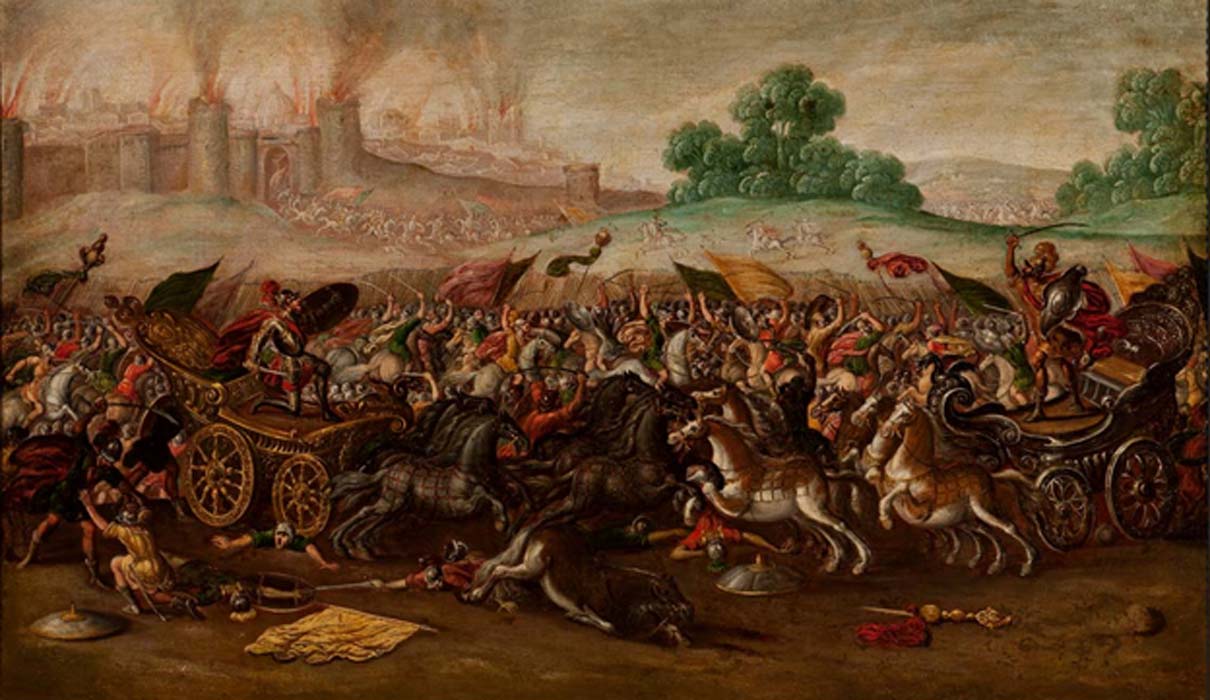New Evidence Verifies Biblical Accounts of the Babylonian Destruction of Jerusalem
In the week leading up to Hebrew ceremonies associated with the destruction of Jewish Temples in Jerusalem, archaeologists in Israel have uncovered the remnants of a firestorm, strong evidence supporting the biblical account.
Impressive Artifacts Discovered in the City of David
In the week leading up to the Jewish fast of Tisha B’Av, which mourns the destruction of both Jewish Temples in Jerusalem, new evidence of the city’s destruction by the Babylonians during the First Temple era has been uncovered in excavations conducted by the Israel Antiquities Authority (IAA). The excavations, funded by the City of David Foundation (Elad), focused on the City of David’s eastern slope and unearthed buildings covered with layers of collapsed stone which are believed to be more than 2,600 years old.
According to Ortal Chalaf, co-director of the current excavations at the City of David, a thick destruction layer of charcoal ash beyond Jerusalem’s city walls was “hiding” smashed pottery jars with a rosette seal (which was in royal use during the final decade before the fall of the First Temple) and an impressive ivory statuette of a nude woman.
- Cave of Zedekiah: The Secret Grotto of Jerusalem
- Ruins of Ancient Winery and Roman Bathhouse Unearthed in Jerusalem

Ivory statue of a woman. (Clara Amit/ Israel Antiquities Authority)
Chalaf told The Times of Israel:
“These seals are characteristic of the end of the First Temple period and were used for the administrative system that developed towards the end of the Judean dynasty. Classifying objects facilitated controlling, overseeing, collecting, marketing and storing crop yields. The rosette, in essence, replaced the ‘For the King’ seal used in the earlier administrative system.”

Jug handles with the rosette seal. (Eliyahu Yanai/ City of David Archive)
The co-director of the current excavations, IAA archaeologist Dr. Joe Uzie, suggested that the newly found artifacts in the site’s eastern slope will help them to understand and study the days leading up to and the act of the destruction. Furthermore, archaeologists also found various items in between the collapsed structures, including burned wood, grape seeds, pottery, fish scales, bones, and some other rare artifacts.

Shattered jugs found during excavations. (Eliyahu Yanai/ City of David Archive)
Not the First Remains Uncovered of the Babylonian First Temple Destruction
As Israeli archaeological authorities reassure, this is not the first time that remains of the Babylonian First Temple destruction were found in the City of David. However, the intriguing part about the recent dig (which takes place beyond what is commonly thought of as Jerusalem’s city limits during the First Temple), consists of the fact that not all the excavated buildings of this period show signs of a catastrophic destruction layer, “It seems like not all of the buildings were destroyed in a single event. It seems that some were destroyed and others were abandoned and left,” said Uziel in an IAA video. Interestingly, the new findings correspond with those presented by Kathleen Kenyon, a British archaeologist who excavated the site for seven seasons back in the 1960s.
Additionally, Yigal Shiloh, an archaeologist who excavated parts of the City of David after Kenyon, during the late-1970s, wrote a Biblical Archaeology Review article in 1979 recording the works of his first season. He mentioned that one of the most significant conclusions of Kenyon’s work is that “the fortification wall-lines of the Bronze and Iron Ages (Canaanite and Israelite Jerusalem) lay much further down the eastern slope of the ridge than previous investigators had thought.”
- 1,400-Year-Old Coins are the Forgotten Remnants of a Terrifying Siege on Jerusalem
- 2500 –Year Old Signet Ring from Tradeswomen Uncovered in Jerusalem
According to the current team of IAA archaeologists, Jerusalem underwent a continuous growth throughout the Iron Age and this is evident in the construction of several city walls and the fact that the city later spread beyond them, as the IAA stated:
“Excavations carried out in the past in the area of the Jewish Quarter have shown how the growth of the population at the end of the 8th Century BCE led to the annexation of the western area of Jerusalem. In the current excavation, we may suggest that following the westward expansion of the city, structures were built outside of the wall’s border on the east as well.”

The structure in which shattered jugs were found during the summer 2017 Israel Antiquities Authority excavations. (Eliyahu Yanai/ City of David Archive)
Long-Term Search at the Site Eventually Pays Off
After nearly five decades of strenuous excavation works at the city of David by various experienced archaeologists, the new string of buildings discovered recently by the IAA team seems to reward all those researchers who have contributed to the site’s exploration one way or another. As they continue discovering new things, Uziel voiced questions the team is pursuing, “Are we outside the city? Are we excavating an external quarter? Are these domestic buildings?” Uziel wondered.
Of course, one could rephrase his questions and simply ask: How widespread was the destruction of Jerusalem after all?
Top Image: The Burning of Jerusalem by Nebuchadnezzar’s Army by Circle of Juan de la Corte (1580 - 1663) (Public Domain)


















Comments
Sorry, but this article has not made clear any proof, other than there was a fire and some destruction. I does not prove the source of this to me. It could of been any sort of fire of accidental origin that occurs around the world in cities every day.